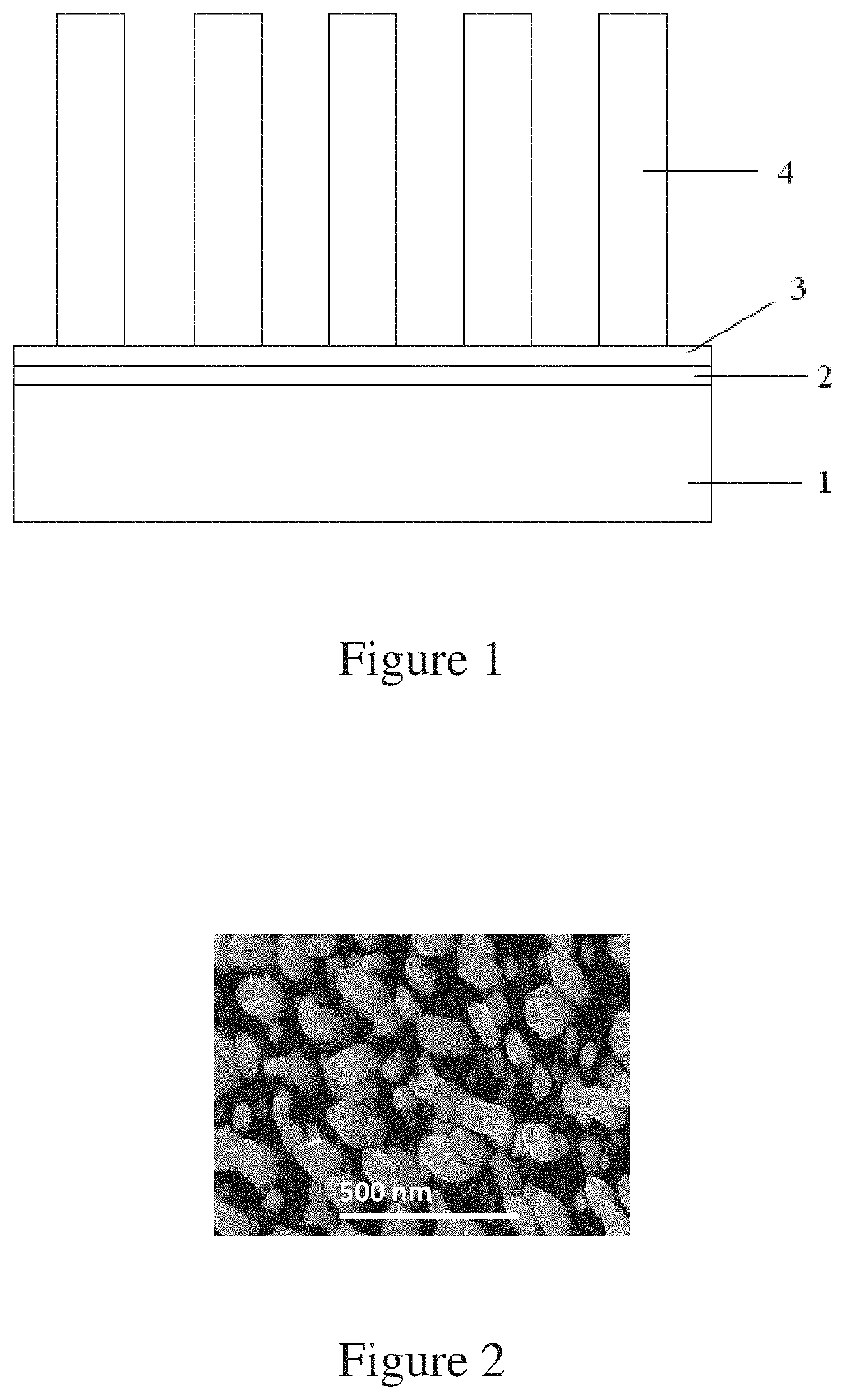Indium nitride nanopillar epitaxial wafer grown on aluminum foil substrate and preparation method of indium nitride nanopillar epitaxial wafer
- Summary
- Abstract
- Description
- Claims
- Application Information
AI Technical Summary
Benefits of technology
Problems solved by technology
Method used
Image
Examples
example 1
[0038]An InN nanorod epitaxial wafer grown on an aluminum foil substrate of this Example sequentially comprises, from bottom to top, an aluminum foil substrate, an amorphous aluminum oxide layer, an AlN layer, and an InN nanorod layer.
[0039]The preparation method of the InN nanorod epitaxial wafer grown on the aluminum foil substrate in the Example comprises:
[0040](1) Selection of a substrate: selecting a commonly used commercial aluminum foil substrate (with an oxidized surface);
[0041](2) polishing and cleaning the substrate: mechanically polishing and grinding the aluminum foil to obtain a flat surface; then placing the aluminum foil with the flat surface into absolute ethyl alcohol for ultrasonic treatment for 1 min to remove organic pollutants and sticky particles, then placing the aluminum foil into deionized water for ultrasonic treatment for 1 min to remove surface impurities, and drying same by high-purity dry nitrogen gas;
[0042](3) in-situ annealing to further remove contam...
example 2
[0047]An InN nanorod epitaxial wafer grown on an aluminum foil substrate of this Example sequentially comprises, from bottom to top, an aluminum foil substrate, an amorphous aluminum oxide layer, an AlN layer, and an InN nanorod layer. The InN nanorod layer 4 adopts AlN as nucleation sites, and nucleating on the AlN to grow InN nanorods.
[0048]The preparation method of the InN nanorod epitaxial wafer grown on the aluminum foil substrate in the Example comprises:
[0049](1) Selection of a substrate and the crystal orientation thereof: selecting a commonly used commercial aluminum foil substrate;
[0050](2) polishing and cleaning the substrate: mechanically polishing and grinding the aluminum foil to obtain a flat surface; then placing the aluminum foil with the flat surface into absolute ethyl alcohol for ultrasonic treatment for 2 min to remove organic pollutants and sticky particles, then placing the aluminum foil into deionized water for ultrasonic treatment for 2 min to remove surface...
PUM
 Login to View More
Login to View More Abstract
Description
Claims
Application Information
 Login to View More
Login to View More - R&D
- Intellectual Property
- Life Sciences
- Materials
- Tech Scout
- Unparalleled Data Quality
- Higher Quality Content
- 60% Fewer Hallucinations
Browse by: Latest US Patents, China's latest patents, Technical Efficacy Thesaurus, Application Domain, Technology Topic, Popular Technical Reports.
© 2025 PatSnap. All rights reserved.Legal|Privacy policy|Modern Slavery Act Transparency Statement|Sitemap|About US| Contact US: help@patsnap.com

